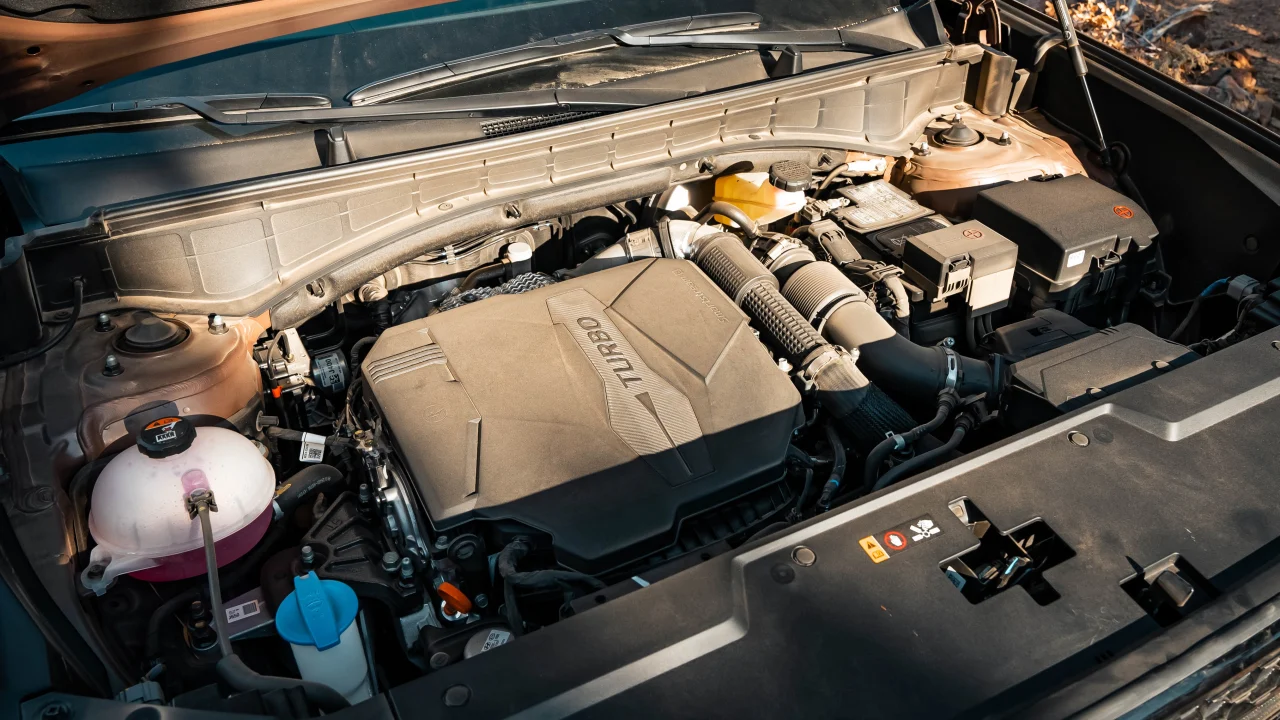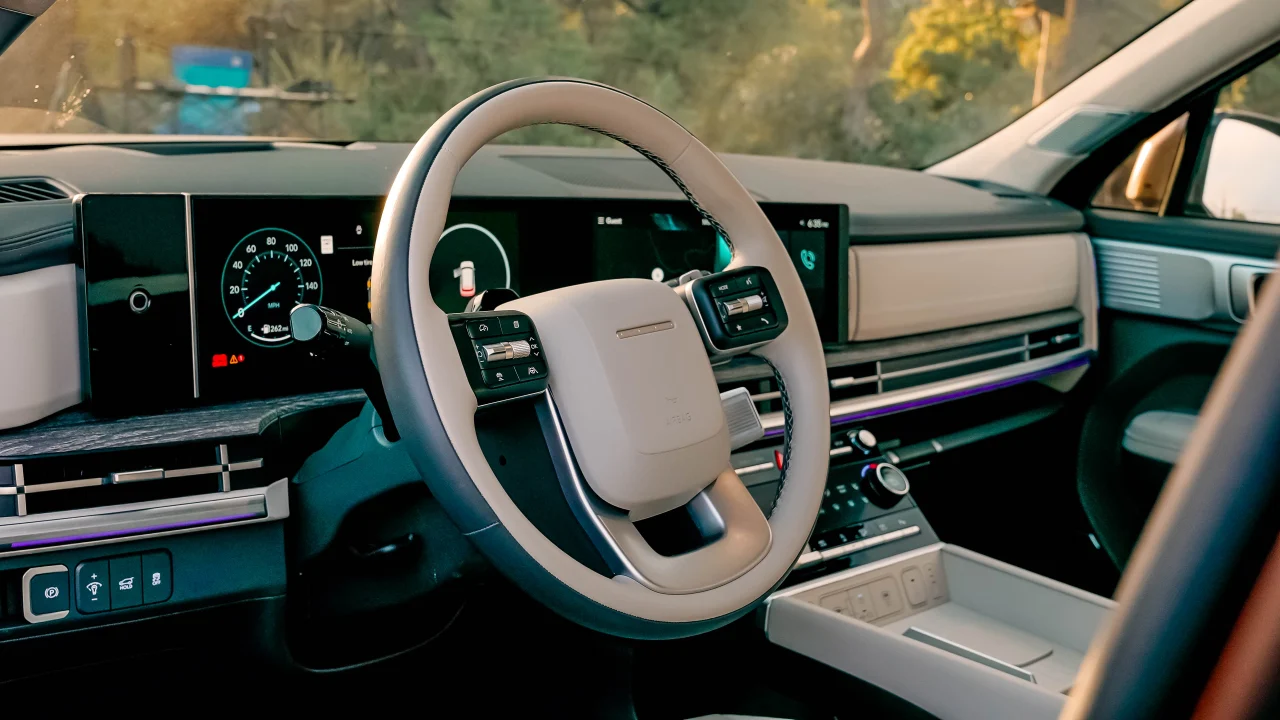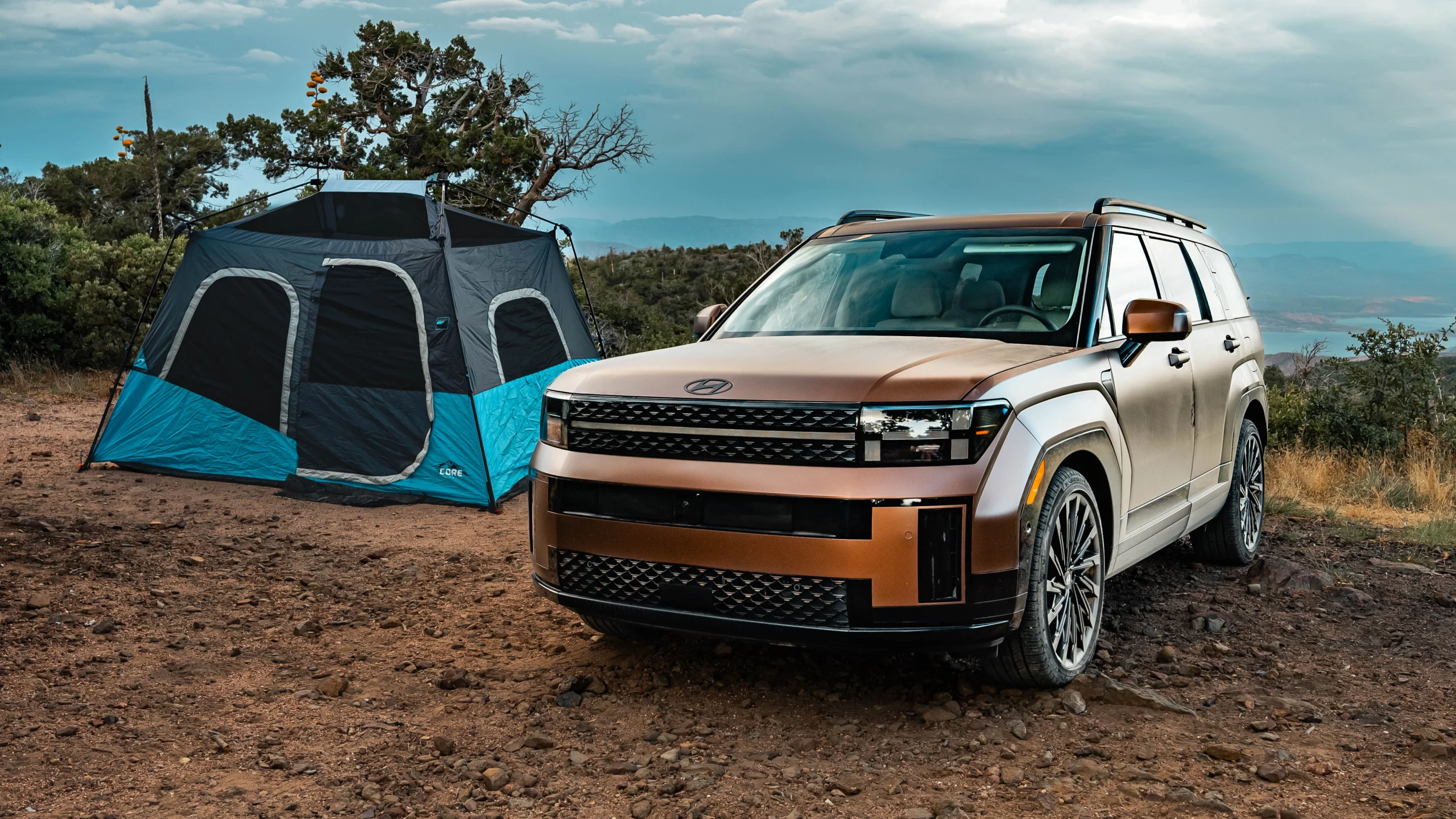The styling of the newest generation of a vehicle can typically be summed up in one of two words: evolutionary or revolutionary. The Porsche 911 is an example of evolutionary visual changes. Despite advances in aerodynamics and technology, it always looks like a 911. Then there are vehicles such as the Hyundai Santa Fe. The fourth-generation model that ran from 2019 until 2023 had curvy sheet metal just like many of its rivals. For the all-new 2024 model, Hyundai threw out the old design and started fresh with straight lines and rigid angles. It was a bloodless revolution that severed the visual connection between the new Santa Fe and its ancestors.
(Little) Room at the Top
Hyundai offers the new Santa Fe in gas, hybrid, and plug-in hybrid forms. I recently had the opportunity to drive a top-of-the-line gas Calligraphy model. Given its spot in the trim hierarchy, our Calligraphy tester already came loaded at the $48,300 base price listed on the window sticker with HTRAC all-wheel drive, 21-inch wheels, 12.3-inch digital gauge and infotainment screens, wireless Android Auto and Apple CarPlay, a Bose audio system, Nappa leather seats, and dual sunroofs. Options outside of the paint and interior colors are the drivetrain setup and accessories, such as all-season floor mats and wheel locks. My test vehicle’s Earthy Brass Matte paint and carpeted floor mats brought its total price up to $50,925.
A Gas-Only Hybrid
My first exposure to the 2024 Santa Fe was through photos online. Like many other people, I couldn’t help but see its resemblance to the modern Land Rover Defender 110, a similarly boxy, square-jawed SUV. When I finally saw my test vehicle in person, my perception of it changed. It was still a handsome rig, but with its H-shaped taillights so low on the widened power-operated rear liftgate, the rear end looked block-headed and top-heavy. The black 21-inch wheels and black wheel arch and lower-body trim made the Santa Fe seem lower to the ground and less like a purpose-built off-roader. It was almost wagon-like. I likened the Santa Fe to a mix between the Defender and a Ford Flex.

Adjust as Needed
A similar combination of disparate traits was present in the cabin. The tall windshield, great forward visibility, and high windowsills gave me the feeling of being in a luxurious hardcore off-roader. But the rest of the cabin was more crossover-like – in the best way. The step-in height was comfortably low. The Gray Nappa leather seats were comfortable, especially the first row, which had heating and ventilation and perfectly padded headrests. I’m 5’10” and after I adjusted the driver’s seat to my height and preferences, I found I had plenty of legroom and headroom behind it in the heated, power-adjustable second row. The third row was compromised by the Santa Fe’s interior architecture. The hump between the second-row captain’s chairs led to a raised third row. To maximize my comfort in the very back, I had to move the second-row seat forward a little to leave enough space for my knees and feet. Even then, my knees were up higher and no matter which rearmost seat I chose, my outboard foot rested on another hump. The cup holders and side-mounted vents for the third row were thoughtful features, but their integration limited the available arm room.

I didn’t get any complaints from members of my family, though. The second my wife saw the Santa Fe, she wanted one. When I went out to dinner with my wife, mother-in-law, and my wife’s aunt and cousin, I heard nothing but positive things. My wife’s aunt is an Audi owner and she instantly fell in love with the paint color. She was also drawn to the ambient lighting and the convenient bag hooks integrated into the back of the front seats. Everyone seemed to enjoy the dual sunroof. My wife’s cousin was happy she had her own climate controls in the last row. (Too bad I forgot to tell her the seats back there recline.)
Babied Driver
Aside from the dimensions of the third row, I didn’t have any issues with the Santa Fe’s cabin, either. The major touch-points were pleasantly soft, especially the supple microfiber that covered the A- and B-pillars, sun visors, and headliner. Keeping an eye on my speed was easy thanks to the head-up display (unless I was wearing polarized sunglasses). Hyundai opted for a functional mix of dials, buttons, switches, and touch-sensitive controls in the center stack, instead of making everything a sleek black “button” just for the sake of flashy tech. I didn’t have to worry about my phone running out of juice because I had two wireless charging pads and a pair of USB-C chargers. Storage space was abundant; I could throw my soft-sided lunchbox in the area below the center stack, put my smaller items in the compartment under the center armrest, and disinfect my office ID badge in the UV-C sanitizer above the glove box. Good or bad, I didn’t know what to expect in terms of ride quality, but I was still surprised by how pillow-y the Santa Fe’s suspension was.
Get Up and Go…Eventually
Just like the options, the engine choices for the gas-only Santa Fe Calligraphy are limited. In fact, there’s only one and it’s paired with an eight-speed dual-clutch automatic transmission. Fortunately, the turbocharged 2.5-liter I4’s 277 horsepower and 311 lb-ft of torque are well-suited to the Santa Fe. The engine has more than enough punch to get all three rows moving quickly – it just has to shake off the noticeable turbo lag first.
According to the EPA, our test vehicle could return 20 mpg in the city, 28 on the highway, and 23 combined. After putting 140 miles on the Santa Fe, I hit an average fuel economy of 19.6 miles per gallon.
An Army of __?
The unfortunate side effect of SUVs being so popular is that many of them look alike. That’s what makes the 2024 Hyundai Santa Fe so attractive – it’s not just something different in its segment, it’s something completely different from the Santa Fes before it. It’s a revolution. Will you buy one and be a part of the new era of Hyundai’s popular SUV? Let me know in the comments below.

Comments are closed